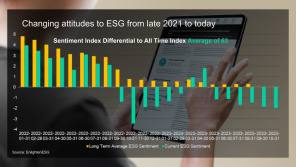

ESG investing has boomed in popularity over recent years as fears over climate change have led investors to consider the impact of their money and a growing number of millennials have begun investing.
It is likely to grow further as new proposals that form part of the EU Sustainable Finance Action plan — set to come into force in 2021 — will require advisers to identify their clients’ “sustainability preferences” and recommend products suitable on this basis.
But the complex nature of a client’s ESG choices, the sometimes contradictory and flawed rating systems and fears of ‘greenwashing’ have created a confusing and challenging maze for advisers.
According to a new adviser guide from discretionary fund manager Brooks Macdonald, splitting the conversation into five key areas, using basic statements clients can agree or disagree with, can go some way to smoothing the process.
1 Knowledge, understanding and motives
Brooks’ report noted there was no “singular type of investor” and urged advisers to ascertain motives and understanding.
This can ensure the adviser pitches conversations at an appropriate level and tailors the discussion in a way that resonates with the client.
Keeping this simple, with a focus on incorporating a defined set of non-financial or ethical preferences into an investment portfolio, is the best way to go, according to the report.
2 Narrow vs broad preferences
Next, advisers should discuss specific issues to decide if their client wishes to impact particular causes, or instead have a broad ESG focus.
The report said: “It is important to establish a clients’ position and any specific preferences that they would like to reflect. You also need to understand ‘how’ specific the client preferences are.
“For example, if a client wants to avoid a certain product, is this based on companies that produce that product or also companies that sell it?”
3 Alignment to financial objectives
Advisers were also urged to assess the clients’ preferences in the context of financial objectives.
The proposed EU regulations recommend that responsible investment preferences should not outweigh financial goals, so this has to be taken into account within ESG discussions.
Brooks suggested discussing the impact of exclusions on diversification, and the potential impacts on investment performance, before exploring if the client was willing to give up investment returns.
4 Responsible investment approaches
Once motives, breadth of preferences and financial objectives have been established, the next step involves different ESG approaches.
Brooks said: “The responsible investing landscape is broad with confusing and inconsistent terminology, which can result in people not engaging with it.
“If a client indicates that they are interested in avoiding certain investments it is helpful to explore this in the conversation…in some cases clients will want exclusionary screens while others may be comfortable with a broader approach.”
5 Proportion of assets
Since many clients will be new to responsible investing, the report noted some may feel more comfortable investing only a proportion of their assets alongside a more traditional approach.
However, other clients could want their entire portfolio aligned with their views, so advisers were reminded of the importance of working out clients’ preferences on this front.
imogen.tew@ft.com
What do you think about the issues raised by this story? Email us on fa.letters@ft.com to let us know.



